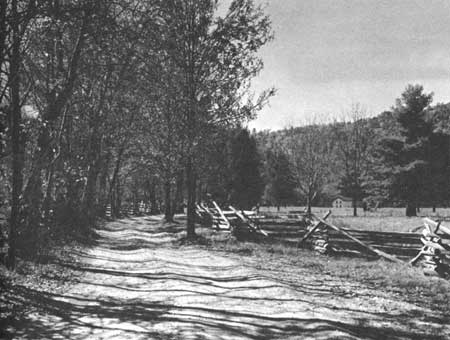|
GREAT SMOKY MOUNTAINS National Park |
 |
Man in the Great Smoky Mountains
Up to a century ago, the area we now know as Great Smoky Mountains National Park was virtually unknown. Cherokee Indians whose reservation joins the park to the south, came in occasionally to hunt or fish and a few hardy white settlers dwelt in simple cabins which they built from the forest trees. By the start of the 20th century, several hundred families, mostly descendents of colonists from England and Scotland, were living in the Great Smoky Mountains. Isolated from the outside world, they lived a life of self-sufficiency. What they couldn't make they had to do without. Their resourcefulness in the construction of simple implements for use on their farms and in their homes becomes very evident when we examine these objects as displayed in the visitor center at Oconaluftee, near the park's Cherokee entrance.
Farming was done along the narrow bottomlands in the wider coves, and, often enough, on fairly steep hillsides. The tending of livestock occupied a considerable portion of the mountaineer's time. Cattle, sheep, and hogs roamed the forested mountainsides, where food was ample during most of the year. Hunting, trapping, and fishing served to bring welcome variety to the monotonous fare of these people. On those infrequent occasions when trips were made to a nearby community, needed items were obtained by barter. The entire family usually engaged in the harvesting of wild berries and nuts.
 Some of the works of man seem indigenous to the region. |
Mostly unaware of the great changes which were taking place beyond these mountains, the people continued in their relatively primitive way of life until recently. Their names, their speech, and their music are reminiscent of past generations.
A number of log cabins, barns, and other structures that became part of Great Smoky Mountains National Park when the mountaineers sold their property and moved away have been rehabilitated. Park visitors now, and for generations to come, can examine these buildings in such places as Cades Cove and Roaring Fork, where some of the structures remain on their original sites, and in the Oconaluftee Visitor Center area, where they are grouped to facilitate easy inspection.

|

|
| NPS History | History & Culture | National Park Service | Contact |
|
Last Modified: Sat, Nov 4 2006 10:00:00 pm PST |


